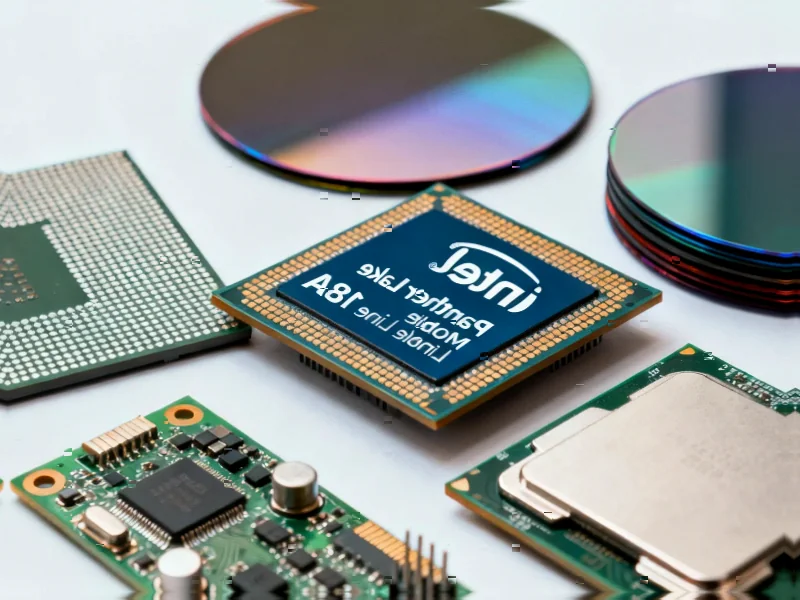According to Phoronix, AMD’s Radeon AI PRO R9700 workstation graphics card began shipping last week with a focus on AI workloads while maintaining competitive graphics performance. The card features RDNA4 architecture with 32GB of GDDR6 memory and is priced at $1299, significantly lower than AMD’s previous flagship Radeon PRO W7900 at $3699. Testing revealed solid OpenGL and Vulkan performance using Linux 6.18 kernel with Mesa 26.0-devel drivers, showing the card handles professional graphics workloads effectively. Compared to NVIDIA alternatives, the R9700 competes against the RTX 4000 Ada at $1449 and RTX 6000 Ada at $5300, though Blackwell generation comparisons weren’t available. This positions the R9700 as an intriguing option for professionals seeking balanced AI and graphics capabilities.
AMD’s Calculated Market Entry
AMD’s decision to launch the R9700 at $1299 represents a strategic move to capture mid-range workstation users who need both AI acceleration and traditional graphics performance. The pricing undercuts not only NVIDIA’s offerings but also AMD’s own previous generation, suggesting a deliberate attempt to gain market share in the professional segment. Historically, AMD has struggled to compete effectively in the professional graphics space dominated by NVIDIA’s Quadro and now RTX Ada lines. By leveraging their RDNA4 architecture and focusing on the emerging AI workstation market, AMD may have found a niche where they can compete without directly challenging NVIDIA’s highest-end professional cards. The Radeon PRO W7900’s $3699 price point created a significant gap in AMD’s lineup that the R9700 now fills more accessibly.
The Technical Tradeoffs Behind the Price
While the $1299 price seems attractive, it comes with notable compromises compared to previous generation flagships. The reduction from 48GB to 32GB of VRAM, narrower 256-bit memory interface, and fewer compute units (64 vs 96) represent significant downgrades that could impact performance in memory-intensive professional applications. The W7900’s 384-bit bus and higher memory bandwidth gave it an advantage for tasks like high-resolution video editing, scientific visualization, and complex 3D modeling that the R9700 may struggle to match. However, the RDNA4 architecture improvements and PCI Express 5.0 support provide compensatory benefits that might balance these tradeoffs for many workloads.
The Linux Advantage in Professional Markets
AMD’s strong open-source driver support on Linux gives them a significant advantage in certain professional segments, particularly in research, scientific computing, and development environments where Linux dominates. The mature RDNA4 support in AMDGPU kernel driver combined with Mesa’s RadeonSI OpenGL and RADV Vulkan drivers provides a robust out-of-the-box experience that contrasts with NVIDIA’s proprietary driver approach. This could be particularly appealing for organizations deploying workstations at scale, where driver maintenance and compatibility are major concerns. The testing showing good performance even on stock Ubuntu 24.04.3 LTS demonstrates AMD’s commitment to making their professional cards work seamlessly in enterprise Linux environments.
Potential for Market Disruption
The R9700’s positioning creates an interesting dynamic in the professional graphics market. At $1299, it undercuts NVIDIA’s RTX 4000 Ada while offering competitive performance and substantial VRAM for AI workloads. This could appeal to smaller studios, research labs, and individual professionals who need both graphics and AI capabilities but can’t justify $3000+ cards. The timing is particularly strategic as more creative and technical professionals explore local AI model deployment alongside their traditional workflows. However, AMD faces the challenge of overcoming NVIDIA’s entrenched position in professional software certifications and industry mindshare. Many professional applications are still optimized primarily for NVIDIA hardware, and changing that perception requires sustained effort beyond competitive pricing.
Long-term Implications for Workstation Graphics
AMD’s approach with the R9700 signals a shift in how workstation graphics cards are positioned. By integrating AI acceleration as a core feature rather than an afterthought, AMD acknowledges the growing convergence of traditional graphics and AI workloads in professional environments. This could pressure NVIDIA to reconsider their product segmentation and pricing strategies. The success of this approach will depend on whether software developers embrace AMD’s architecture for both graphics and AI tasks, and whether the performance compromises compared to higher-end cards prove acceptable for target users. If the R9700 gains traction, it could accelerate the trend toward more affordable, multi-purpose professional graphics solutions that don’t require separate cards for graphics and AI workloads.




